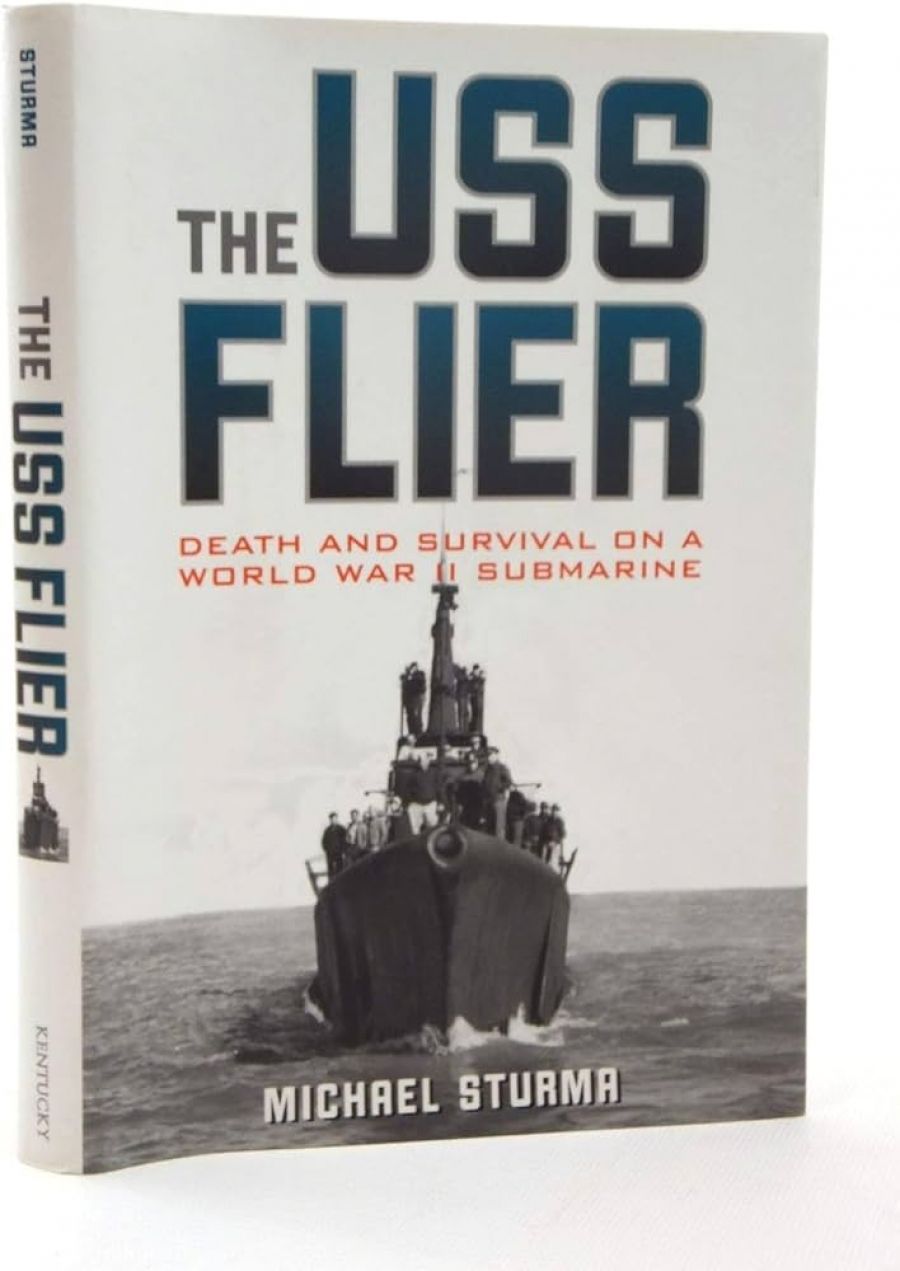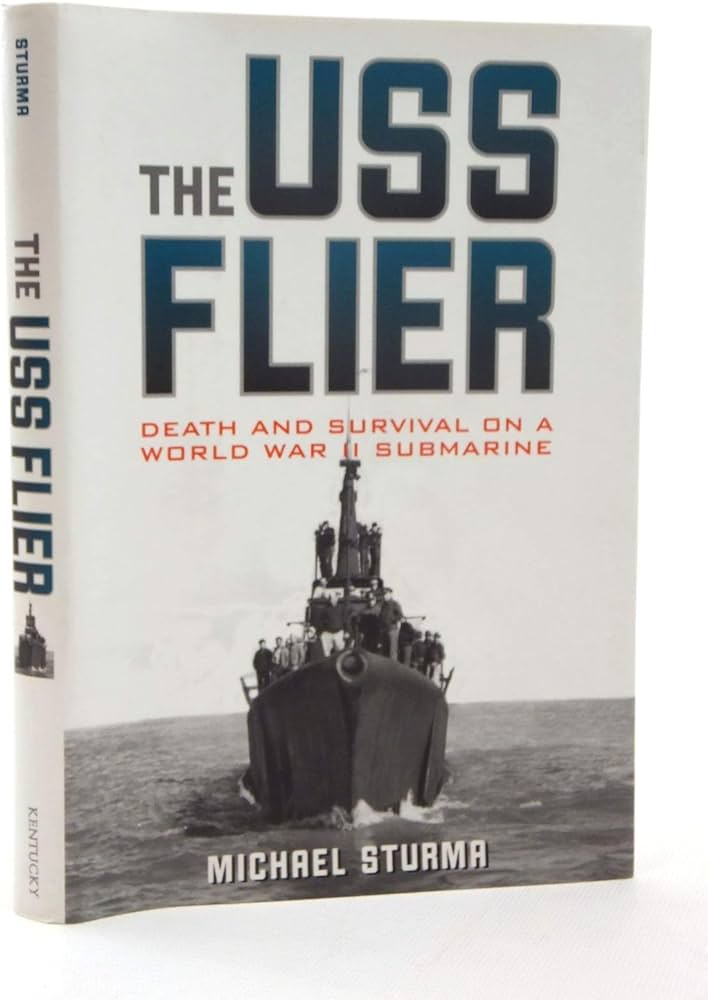
- Free Article: No
- Custom Article Title: Submersive History
- Review Article: Yes
- Article Title: Submersive History
- Online Only: No
- Custom Highlight Text:
My first emotions in a seagoing submarine were a mixture of fear and exaltation. I was a seventeen-year-old cadet-midshipman ‘sea riding’ in HMAS Oxley as it prepared to fire the first Mark 48 guided torpedo acquired by the Royal Australian Navy from the United States near thirty years ago. When the boat submerged off Sydney heads and we proceeded beyond a depth of six hundred feet, I assumed the strange noises I could hear and the weird sensations I felt were a familiar part of submarine life. While I had complete faith in the very experienced commanding officer, I realised that any catastrophic accident would probably result in the deaths of all seventy-two souls on board.
- Book 1 Title: The USS Flier
- Book 1 Subtitle: Death and survival on a world war II submarine
- Book 1 Biblio: University of Kentucky Press, US$29.95 hb, 232 pp
- Book 1 Cover Small (400 x 600):

- Book 1 Cover (800 x 1200):

In The USS Flier: Death and Survival on a World War II Submarine, Michael Sturma, chair of the history programme at Murdoch University, has conveyed a vivid sense of the terrors that potentially awaited American submariners during World War IL In addition to producing a very good sea story, Sturma has opened a window into the dangers and deprivations faced by the men and officers who prosecuted the sub-surface war against Japan in the Pacific during 1942-45. He highlights the important role that Australia played in supporting Allied naval operations.
After outlining the early career of the Flier’s commanding officer, Lieutenant Commander John Crowley, Sturma tracks the construction, fitting-out, commissioning and first deployment of the US Navy’s newest fleet submarine. After running aground on a reef between Pearl Harbor and Midway during its initial war patrol, the Flier was repaired while Crowley appeared before a formal naval inquiry. Crowley survived with his reputation intact as the Flier embarked on a patrol that would take her from Hawaii to Fremantle. After some R and R in Australia and a short visit to Exmouth Gulf, Flier proceeded to the South China Sea in the hope of sinking enemy merchant ship in waters off Japanese-occupied Indo-China.
On the evening of 13 August 1944, as the Flier entered the Balabac Strait, a stretch of water linking the Sulu Sea with the South China Sea, the submarine struck a mine and the hull was badly holed. In less than one minute, the boat sank to the bottom of the Sulu Sea. Of the eighty-six men on board, only fourteen managed to escape, including Lieutenant Commander Crowley. The survivors spent the next eighteen hours in the water, with eight managing to swim to an island occupied by the Japanese. Lacking drinking water and decent food, the men miraculously made their way back to the United States, becoming the first submariners from a stricken boat to do so. Sturma provides some statistics to highlight the significance of their achievement: for example, the US Navy lost fifty-two submarines and 3500 crew members during World War II.
The narrative then turns to the official inquiry into the loss of the Flier and her sister, USS Robalo. For the second time in a short period, Crowley was obliged to defend his professional standing. Had the Flier strayed out of deep water before it hit the mine? What protective procedures or counter-measures might Crowley have employed to prevent his vessel being lost? Had everything been done to save the Flier in the sixty seconds before it plunged to the bottom? The inquiry left a bitter taste in the mouths of men who had done their best in the most difficult of circumstances. Sturma leaves the reader in no doubt that Crowley and all those who served in the Flier deserved better. The failure of the Navy to provide next of kin with details about the fate of their loved ones, including an explanation of the submarine’s loss, was a compounding public relations disaster.
Sturma concludes his book with gentle cameos of the eight men who lived to speak of their ordeal. They did not remain in close contact after the war, but they retained affection for the submarine that bad been their home during the most demanding period in their lives. At the time of writing, only one member of the Flier’s crew is still living. As for the Flier itself, it remains deep underwater, along with several mysteries that will remain forever unresolved.
As the author of two books on Australian submarine operations in the Great War, I am an unashamed devotee of submarine stories in both war and peacetime. They are not the easiest narratives to construct. The author needs to touch on matters relating to engineering, munitions, logistics, tactics and communications, without assuming any prior knowledge on the reader’s part. There is also a need to explain the mundane aspects of getting a submarine to sea and into combat while knowing the vast majority of readers have never even been inside a submarine, let alone been to sea in one.
Michael Sturma has produced a first-class naval history that will delight general and specialist readers. It adds to what we know of Australian involvement in the American submarine operations and of their contribution to Japan’s eventual defeat. The production values are superior, and the notes and bibliography are important guides for further inquiry. While Sturma might have included a little more comparative material dealing with submarine losses among other navies before, during and after World War II, this book whets the appetite and will, I am sure, prompt readers to seek out his earlier study, Death at a Distance: The Loss of the Legendary USS Harder (2006). Sturma’s work deserves to be read more widely.


Comments powered by CComment